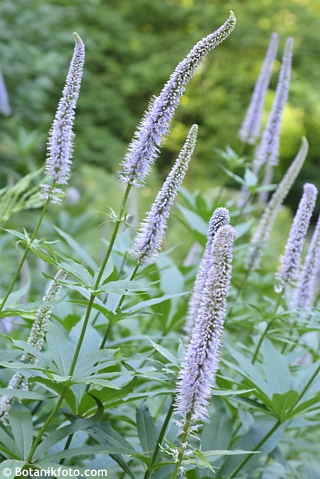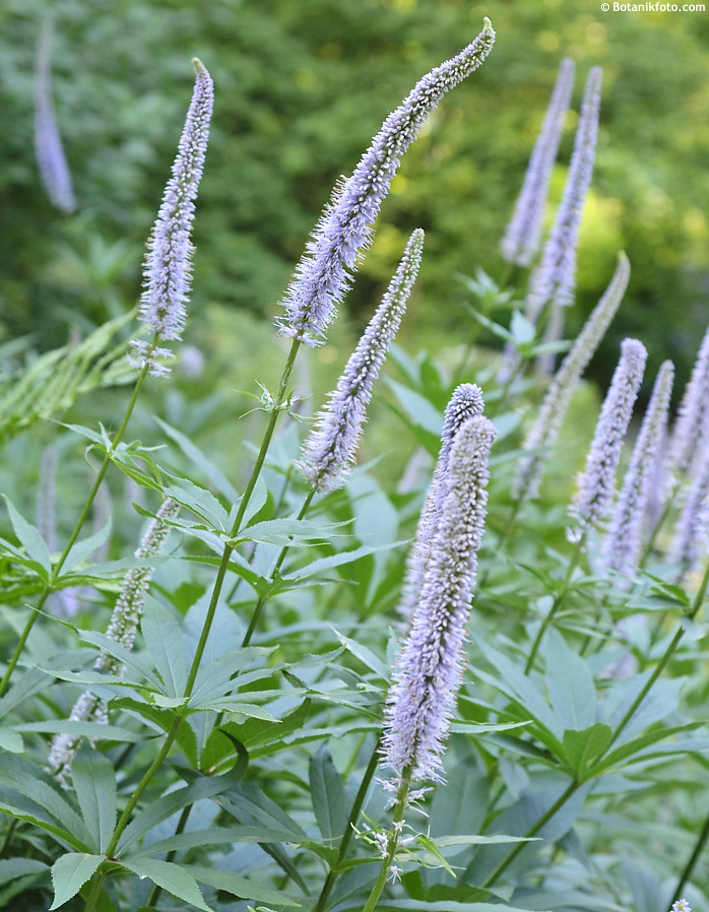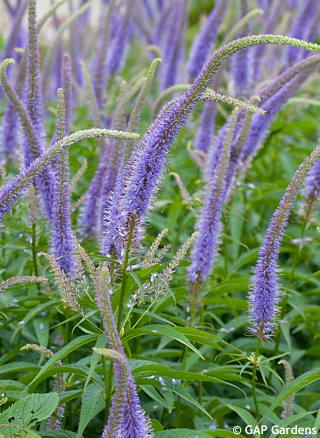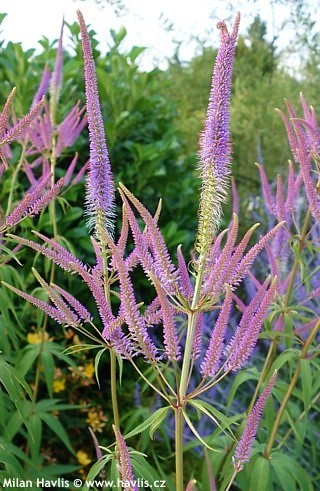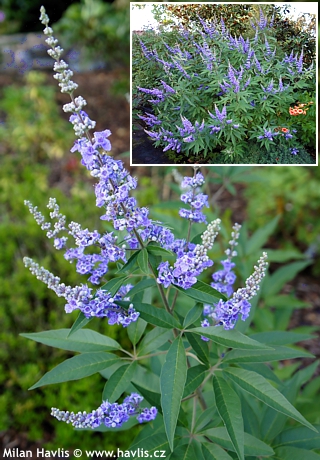Veronicastrum sibiricum Siberian culver's root
size/type
mid-sized perennial,mid-sized perennial
usual height
1-1,5m
usual width
0,5-1m
leaves
deciduous broadleaf
colour of leaves
flowers
showy
colour of flowers
blooming time
July-August
location
full to partial sun
USDA zone (lowest)
3 (down to -40°C)
winter protection
for zone 5+6

for zone 7

categorized
Veronicastrum
If looking for a perennial with interesting architecture that would look great or even dominant among shrubs or trees, perhaps could be a substitute for a shrub in places where there is not enough space, culver’s root might be the one for you. This genus has two species, each of them is named after its origin: Virginian and Siberian. They are very similar and differ mostly in flower colour and size in maturity. Formerly named as veronica (speedwell) it was decided that culver’s root is so unique that it deserves its genus.Description of the plant:
Siberian culver’s root differs from its North-American brother with larger leaves and shorter stems – compact growth. Its leaves are wider and coarser, mid to deep green, and grow usually in whorls of 6. They may resemble cannabis. In early summer the tips of the stems begin producing flower buds composed in long spikes, botanically more correctly classified as terminal racemes, opening in early July into small, lavender blue to soft violet flowers with long tubes owing to which they look hairy. Culver’s root will grow in evenly moist, fertile soil in full sun or with some shade during the day. It requires no maintenance whatsoever expect removing dead stems in early spring. It is hardy to about -40°C (USDA zone 3).
Last update 25-01-2014
QUICK PRICE OVERVIEW
CURRENTLY SOLD OUT
WANT TO TRY A SIMILAR PLANT?












